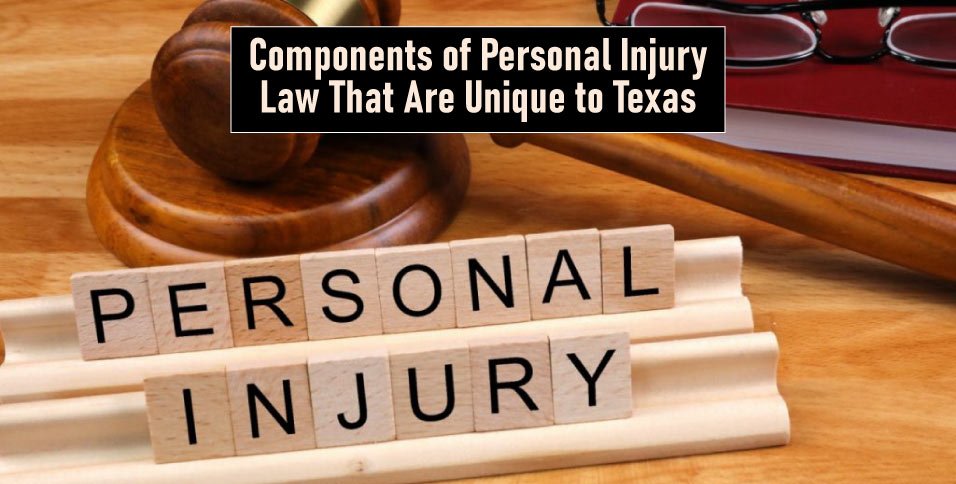Life can take unexpected turns; sometimes, those turns involve injuries caused by someone else’s carelessness. If you’ve been hurt in Texas due to another person’s negligence, understanding the state’s personal injury laws is crucial.
Personal injury law deals with situations where someone suffers physical or emotional harm because another party fails to act with reasonable care. This negligence can take many forms, such as a car accident caused by a distracted driver or a slip and fall on a wet grocery store floor.
Texas, however, has its own unique set of rules and regulations regarding personal injury claims. While this guide focuses on Texas, legal frameworks vary widely across the U.S. For example, if an accident occurs in Colorado, a Denver car accident lawyer can help you understand how state-specific laws may influence your case. From insurance claim procedures to comparative fault rules, each state brings its own challenges. Having a local attorney ensures you’re not caught off guard by unfamiliar legal processes. Knowing these distinctions can significantly impact your case. Throughout this article, we’ll explore key features that set Texas personal injury law apart from other states.
If you’re considering pursuing a personal injury claim, consulting with a San Antonio personal injury lawyer who is familiar with these nuances is highly recommended. Their expertise can ensure you navigate the legal process effectively.
The Groundwork: Standard Elements of a Personal Injury Claim
Before diving into the unique features of Texas law, let’s establish a common ground. To win a personal injury lawsuit in most states, you’ll typically need to prove four key elements:
- Duty of Care: This means the other party has a legal obligation to act cautiously and avoid causing you harm. For instance, drivers have a duty to follow traffic laws and operate their vehicles safely.
- Breach of Duty: Here, you need to show that the other party failed to uphold their duty of care. This could be a driver texting and causing an accident or a property owner neglecting to fix a broken staircase that leads to a fall.
- Causation: This element directly links the other party’s breach of duty and your injuries. In simpler terms, their actions may have demonstrably caused your harm.
- Damages: Finally, you may prove that you suffered actual losses from the accident. These damages, like medical bills and lost wages, can be financial or non-economic, such as pain and suffering.
While these elements form the foundation of personal injury claims nationwide, Texas has its interpretations and applications that we’ll explore in the next section.
Unique Features of Texas Personal Injury Law
Now that we understand the general framework of personal injury claims let’s delve into the aspects that make Texas stand out:
Modified Comparative Negligence Rule: Sharing the Fault, Sharing the Award
Comparative negligence comes into play when both you and the other party share blame for an accident. Traditionally, if your contribution to the accident was even 1% at fault, you couldn’t receive any compensation.
Texas, however, follows a modified comparative negligence rule. This means your percentage of fault reduces your recovery amount, but there’s a crucial twist: There’s a 51% bar. If you’re found to be more than 50% responsible for the accident, you’re unfortunately barred from receiving any compensation.
This makes it even more critical to have a skilled attorney present the evidence effectively to minimize your assigned fault percentage.
Dram Shop Act: Holding Providers Accountable
Dram Shop laws exist to hold establishments accountable for serving alcohol to intoxicated patrons who then cause injuries to others.
Texas has its own Dram Shop Act, allowing lawsuits against bars, restaurants, or liquor stores that overserve alcohol to someone who causes an accident while under the influence. This can be a powerful tool for holding such establishments responsible for the harm caused.
No-Fault Insurance and Personal Injury Protection (PIP): Navigating a Different System
Most states operate on a tort system, where you sue the at-fault party directly. Texas, however, has a no-fault insurance system. This means you typically file a claim with your insurance company first, regardless of who caused the accident, to cover medical expenses and lost wages up to a specific limit.
This system has benefits and limitations, and understanding Personal Injury Protection (PIP) coverage within your no-fault insurance plan is crucial. Consulting with a Texas personal injury lawyer can help you navigate this unique system effectively.
Caps on Non-Economic Damages: Understanding What’s Recoverable
Non-economic damages refer to intangible losses like pain and suffering, mental anguish, or emotional distress. While most states allow juries to decide the amount of non-economic damages awarded in a personal injury case, Texas sometimes imposes a cap.
This means the amount you can recover for these intangible losses is limited. An experienced attorney can advise you on the specifics of non-economic damage caps and how they might affect your potential claim.

Short Statute of Limitations: Acting Promptly is Key
The statute of limitations sets a deadline for filing a lawsuit. In most states, you have two years to file a personal injury claim. However, Texas has a shorter statute of limitations, meaning you generally have to act quicker to preserve your right to sue. This emphasizes the importance of consulting with a lawyer as soon as possible after an injury to ensure you meet all necessary deadlines.
Seeking Legal Counsel
The legal landscape surrounding personal injury claims in Texas can be nuanced and complex. While this article provides a general overview, every situation is unique. Consulting with an attorney experienced in Texas personal injury law is highly recommended for specific legal guidance tailored to your circumstances.
Their expertise can ensure you navigate the legal process effectively, understand your rights and options, and maximize your chances of a successful outcome.
Also Read: Franchise Laws: Educate Yourself before Starting a Franchise Business





















